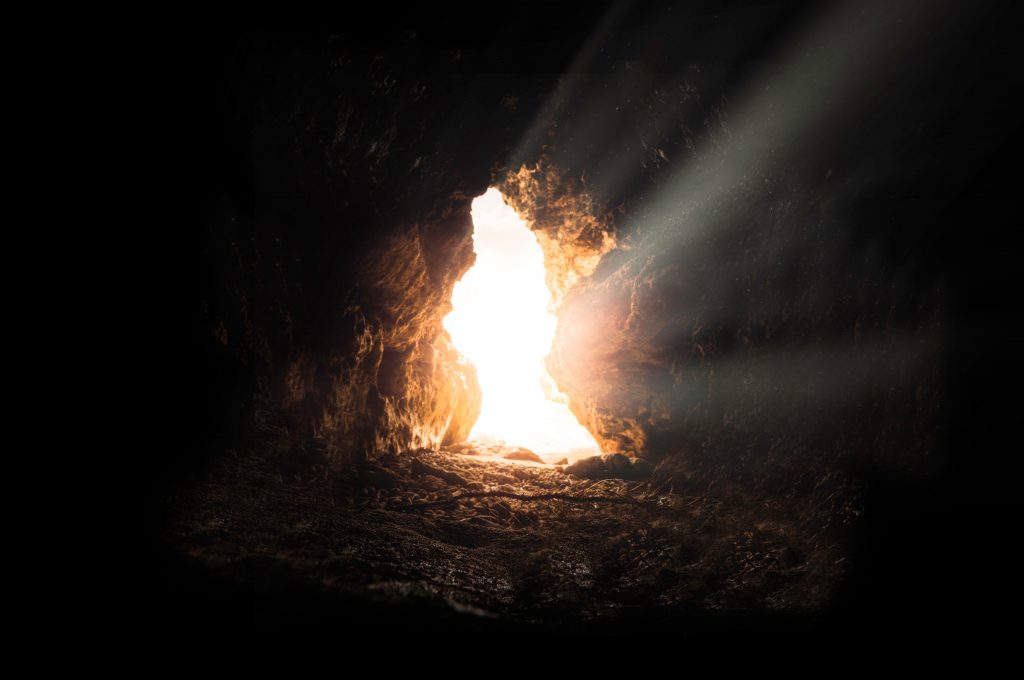
Part 1Part 2Part 3Part 4Part 5P
We’ve looked at the first piece of forensic evidence; what’s the second?
It’s mentioned in only two of the four Gospel accounts (Lk 24.12; Jn 20.5-7). It’s the grave clothes, the “linen wrappings” (Gk othonia). Jesus’ grave clothes were still in the tomb, even though the body was gone.
I’d like to make two observations about this simple fact, one pretty obvious, and the other, frankly, a little more speculative.
First the obvious one.
There’s no conceivable natural explanation that would account for this.
- “The disciples stole the body!” Why would someone engaging in a felonious act—with Roman soldiers sleeping right there—take the time to unwrap the linen strips with which Jesus’ body had been partially bound? Why take the time? And wouldn’t the body be easier to carry if it were still wrapped? Have you ever tried to carry a naked corpse? (Me neither.)
- “Jesus wasn’t really dead; he revived from his coma and walked away.” This is called the “swoon theory.” I’m trying to speak reverently here, but how likely is it that he would leave naked? Isn’t fear of going outside naked one of the most primal human instincts? (We’ve all had that dream, right?) Why leave behind the only things available with which to cover himself? And how did he roll the stone away? And get past those pesky Roman soldiers?
Now let me speculate a little bit. The biblical account says that when Peter and John saw the grave clothes, they immediately believed. (Well, precisely, John believed, and Peter went away marveling.) It appears that they looked at the grave clothes, and they immediately knew what had happened; they immediately ruled out any natural explanation. John is writing his account about 60 years later, and he still remembers it like it was yesterday.
What would account for that?
Well, if there had been a resurrection, what would the grave clothes look like?
We know that Jesus’ resurrected body was able to pass through solid walls (Lk 24.36; Jn 20.19), even though his body was physical (Mt 28.9; Lk 24.39; Jn 20.17, 27) and could even eat (Lk 24.41-43; Jn 21.13, 15). So it seems possible that his body, at the moment of resurrection, could have passed through the linen strips as well.
And if that had happened, what would those strips have looked like?
We know what first-century Jewish burial practices were. They didn’t mummify, but they wrapped the body in cloth strips that looked like what we see on mummies. We know that this wrapping process had been begun on Jesus’ body (Mt 27.59; Mk 15.46; Lk 23.53; Jn 19.39-40) but had been interrupted by sunset, the beginning of the Sabbath (Lk 23.54-56; Jn 19.42). So we don’t know how much wrapping had been done, or on what body parts. They would start with the arms and legs.
And when he resurrected? If his body simply passed through the strips?
Those strips would have remained in their position but collapsed onto the underlying stone slab. The shape of a body, to one degree of completeness or another, defined by carefully aligned and undisturbed linen strips.
This was no natural event. Peter and John knew that immediately. And so they believed.
They believed so thoroughly that a few weeks later, Peter the denier looked the Sanhedrin in the face and said, “You do what you want; I’m going to do what I need to do and defy your restrictive order.”
_____
So what do we have?
We have evidence that rules out any natural explanation we can think of.
We have the kind of evidence that drags us, even if we’re kicking and screaming, to the conclusion that we’re going to need to keep the impossible explanation on the list.
In fact, we’re going to need to move it to the top of the list.
It’s impossible. But it’s the only thing that makes any sense.
I believe in God,
the Father almighty,
creator of heaven and earth.
I
believe in Jesus Christ, his only Son, our Lord,
who was conceived by the Holy Spirit
and born of the virgin Mary.
He suffered under Pontius Pilate,
was crucified, died, and was buried.
The third day he rose again from the dead.
Yes, he did.
Photo by Bruno van der Kraan on Unsplash

Leave a reply. Keep it clean.